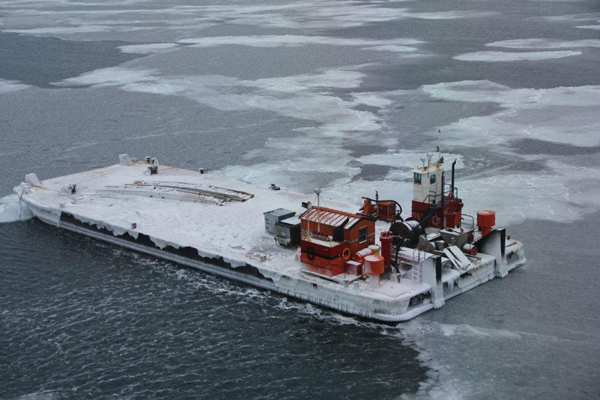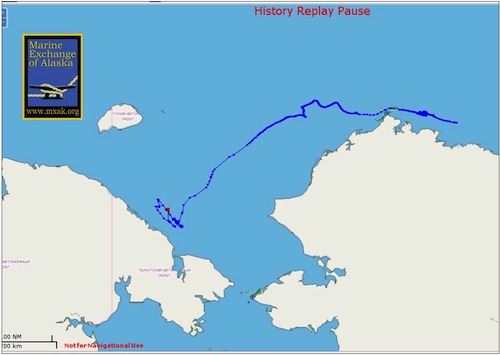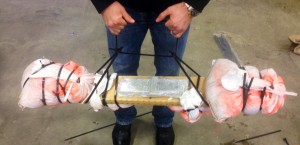
An unmanned fuel barge that got stuck in Arctic sea ice last fall has now made it almost as far as the northern coast of Russia.
It sounds like the makings of a children’s book: the long, unexpected journey of a little barge called the NTAL-2.
The ship got lost in an Arctic storm last October, and nearly ran aground near Prudhoe Bay before getting caught up in advancing sea ice. Since then, it’s traveled almost 1,400 nautical miles without ever touching solid ground — about the distance from Maine to Florida.
“This thing is pretty much stuck in ice,” says Mark Serreze, the executive director of the National Snow and Ice Data Center. “Really just think of it as another ice floe, in many ways.”
Serreze says winter winds have pushed 134-foot barge — and the Arctic ice it’s frozen in — on a typical east-to-west track. It followed Canada and Alaska’s northern coastlines, before leaving U.S. waters, and as of this month, arriving near the Russian coast.

The U.S. Coast Guard handed off this case to their Russian counterparts months ago — but they’ve been able to keep an eye on the barge anyway. That’s thanks to a makeshift transponder from the Marine Exchange of Alaska.
“We program it ahead of time,” says executive director Ed Page. “And [the Coast Guard] basically made a Rube Goldberg design — 2x4s and sandbags and what have you — that allows it to be dropped on [the barge] and not slide off. And that’s what’s tracking it. It’s pretty simple.”
The transponder shows how the barge has moved, and how fast. Page says it’s been a better Arctic experiment than any he could have planned.
“At times it’s going along at three knots or so,” he says. “I thought it would be a lot more stationary, kind of stay in the general area. Didn’t really expect the ice to move that far.”
But Serreze, at the Snow & Ice Data Center, says it doesn’t surprise him.
“The ice cover is becoming thinner, and it’s going to be more responsive to wind, and so that means it tends to move faster,” he says. “But that also means that these pressure ridges — ridging episodes — might become more frequent. And so maybe the barge will get in trouble that way.”

So far, the barge and its thousand or so gallons of diesel fuel cargo seem to be intact. The vessel’s owner, Northern Transportation Company Limited of Canada, didn’t return requests for comment on whether they plan to retrieve the barge. Coast Guard response commander Shawn Decker says they may try recovering it in the summer, when the ice melts.
For now, it’s serving as a good lesson for the Coast Guard on Arctic operations — like how to respond to a theoretical oil spill atop the ice.
“The barge, and the track that it’s taken — think of it as sort of a tracer,” says Mark Serreze. “Now, if you had an oil spill, say, north of Point Barrow or something, it would have taken basically the same track. So I think it is kind of illustrative of the issues you might have to deal with in the future, knowing how a big oil slick would move.”
The Coast Guard is equipped to handle a spill on ice, says commander Shawn Decker. A spill in open water would be a bigger challenge; the science around how oil interacts with the Arctic environment is still limited.
But it still wouldn’t help in the case of the little barge. Decker says only a heavy-duty icebreaker could have rescued the NTAL-2 once it was ice-bound. The United States has just one of those in service: the Polar Star, which has been deployed in Antarctica all winter.
Annie Ropeik is a reporter for KUCB in Unalaska.




